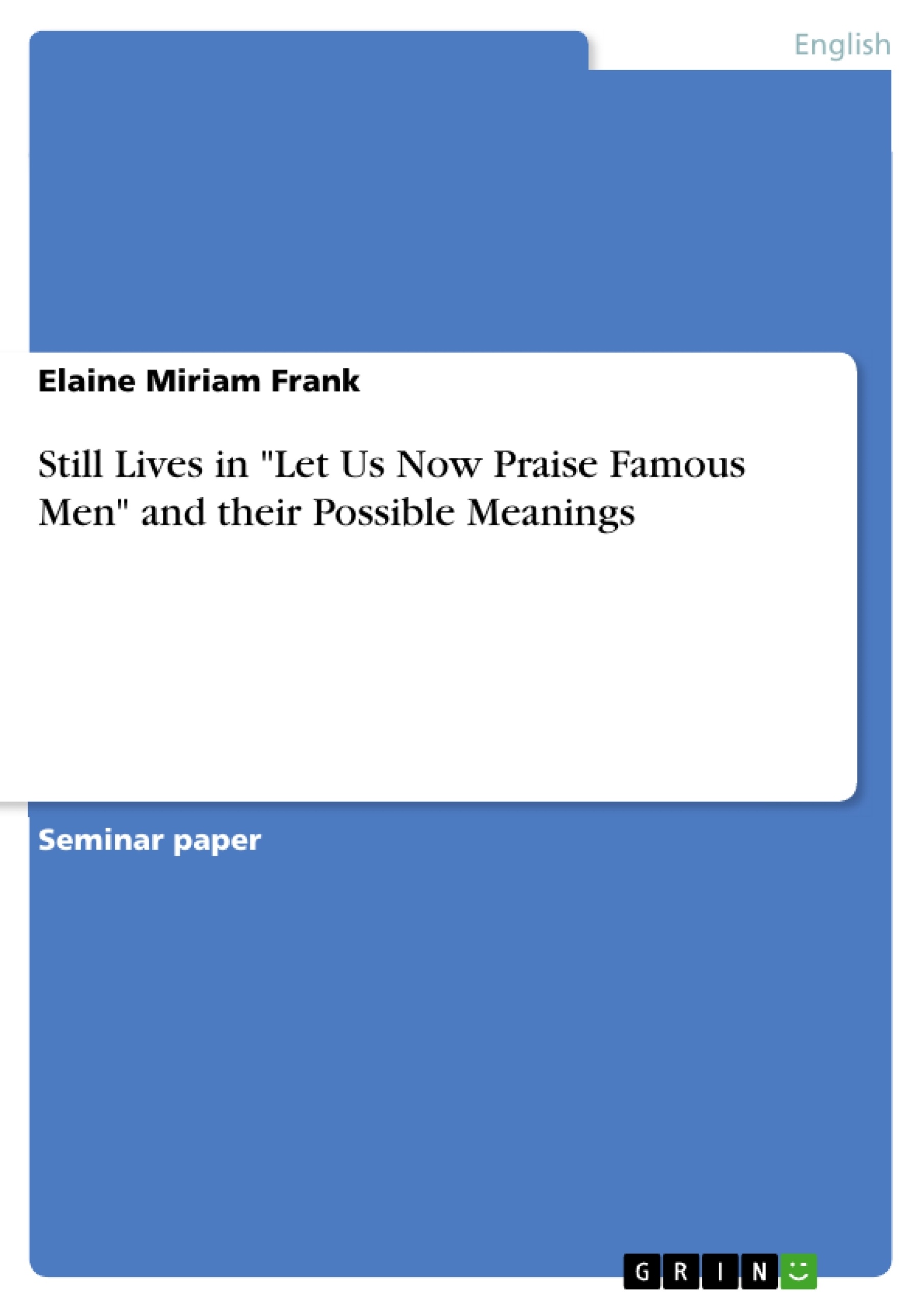In 1936 Fortune Magazine asked James Agee and Walker Evans to write an article about the living conditions of farming families in the countryside of the Middle South of the United States.
After it refused to print their article, they decided to compile a book out of Evans’ documentary photographs and Agee’s descriptive words in order to deliver an authentic insight into the hard-working poor life of farm workers through living with “three representative white tenant families.”
When first looking at Walker Evans’ photographs in "Let Us Now Praise Famous Men" taken in times of postmodernism, the picture of a pair of boots catches the eye immediately, due to the incontrovertible similarity to a “remarkable still life painting” of modernist times: Vincent van Gogh’s canvas a pair of boots.
As this piece of painted art inherits a pool of possible interpretations, it is worth attempting to analyze the possible meanings of it, its adaption by Walker Evans, as well as the vibrant still life descriptions given by James Agee in "Let Us Now Praise Famous Men".
After analyzing and comparing the variety of interpretations of Vincent van Gogh’s painting from 1887 to Walker Evans’ photographic adaption from 1938 to clarify in what way the photograph a pair of shoes is an adaption of Van Gogh’s modernist still life, a couple of chosen written still life descriptions given by James Agee will be analyzed.
The goal of this analysis is to compile the variety of interpretations of certain daily used items by the farm-workers, in order to grasp the poor tenants’ families’ lives better and the intentions behind Agee’s detailed descriptions.
Table of Contents
- Introduction
- Vincent Van Gogh and Walker Evans Pictorial Meanings
- Pictorial Meaning - Vincent van Gogh
- Pictorial Meaning - Walker Evans
- Still lives by James Agee in "Let Us Now Praise Famous Men"
- The Coal-Oil Lamp
- The Farm
- The Clothes
- Conclusion
Objectives and Key Themes
This text explores the significance of still life imagery in James Agee and Walker Evans' collaborative work, Let Us Now Praise Famous Men, by drawing comparisons to Vincent van Gogh's modernist painting, A Pair of Boots. The analysis aims to unravel the layers of meaning embedded in these visual representations of everyday objects, particularly in relation to the context of poverty and hardship experienced by sharecropper families in the American South.
- The significance of still life imagery in art and literature
- The portrayal of poverty and hardship through visual and textual representations
- The historical context of sharecropping and the lives of rural workers
- The relationship between modernism and postmodernism in art and photography
- The impact of the artist's intention and interpretation on the meaning of a work
Chapter Summaries
The first chapter introduces the origins of Let Us Now Praise Famous Men, detailing how the project emerged from a commissioned article and evolved into a collaborative effort between Agee and Evans. The chapter then sets the stage for the analysis by highlighting the relevance of Walker Evans' photograph of a pair of boots in relation to Vincent van Gogh's modernist painting of the same subject.
Chapter two delves into the pictorial meanings of Van Gogh's A Pair of Boots, analyzing its historical context, artistic techniques, and diverse interpretations. The chapter examines how Van Gogh's approach to still life revolutionized the art form, highlighting his use of light, brushstrokes, and the choice of subject matter. It explores the possible meanings conveyed by the worn-out boots, suggesting they represent the poverty and hard labor of the working class.
Keywords
This text focuses on the intersection of art, literature, and socio-economic realities. Key terms include still life, poverty, sharecropping, modernism, postmodernism, visual representation, textual analysis, Vincent van Gogh, Walker Evans, James Agee, Let Us Now Praise Famous Men, and the American South.
- Quote paper
- Elaine Miriam Frank (Author), 2015, Still Lives in "Let Us Now Praise Famous Men" and their Possible Meanings, Munich, GRIN Verlag, https://www.grin.com/document/294740




